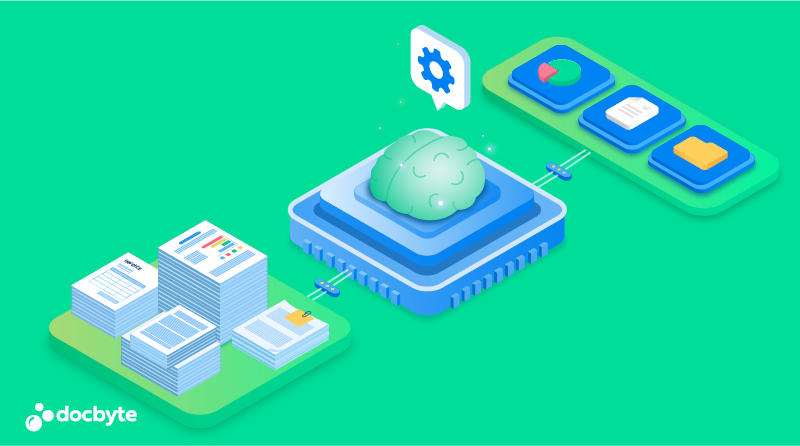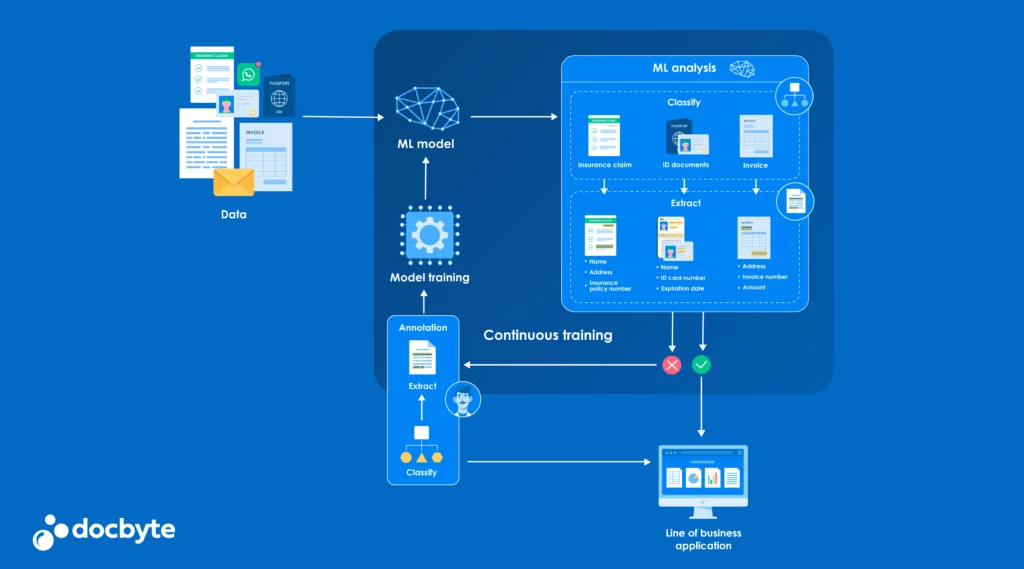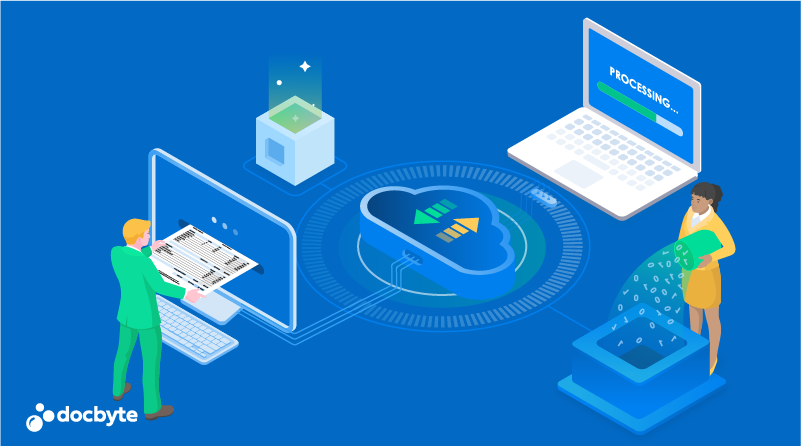In today’s technologically advanced world, businesses and organizations constantly seek ways to streamline operations and increase efficiency. That’s where intelligent document processing comes in – a revolutionary software that automates extracting valuable data from complex documents. This technology allows businesses to quickly digitize and process their documents, saving time and resources.
A critical component of intelligent document processing is optical character recognition, or OCR, which enables the software to recognize text within scanned documents. OCR technology is key to the success of this automated process, allowing for accurate data extraction from a wide range of documents. With intelligent document processing and OCR technology, businesses can stay ahead of the curve and increase productivity like never before.
Whitepaper - Intelligent Document Processing
What is IDP or Intelligent Document Processing?
It’s a machine-learning process. Intelligent document processing (IDP) specializes in extracting information from various document formats, automating the processing of unstructured or semi-structured data to organized data. This streamlines business processes and delivers substantial time and cost savings. IDP stands out as a cutting-edge solution in the realm of document management.
Document Preparation in Intelligent Document Processing (IDP)
The document preparation phase within Intelligent Document Processing (IDP) is a crucial pre-processing step that lays the foundation for accurate and efficient data extraction. In this phase, advanced software employs intelligent algorithms to clean and meticulously enhance the quality of documents.
Tasks encompassed in document preparation include the reduction of noise, such as marks or stains, correction of orientation through rotation, cropping, adjustment of brightness, and more.
Leveraging Optical Character Recognition (OCR) techniques, the goal is to optimize document clarity and order before initiating the IDP process. This meticulous preparation ensures that the subsequent stages of IDP, including classification and extraction, operate on a refined and standardized dataset, ultimately contributing to the overall accuracy and efficiency of the document processing workflow.
The Five-Step Process of IDP:
- Document Collection:
-
-
- Gather and arrange all documents, considering both paper-based and digital formats.
-
- Preparation:
-
-
- Using OCR techniques, intelligent software cleans, rotates, crops, and enhances document quality.
-
- Classification:
-
-
- Documents are categorized, aiding in the selection and processing of relevant data.
-
- Extraction:
-
-
- Visual and textual data are extracted, leveraging AI to understand and ensure 99% accuracy.
-
- Validation:
-
- Data undergo review by AI and humans, with Machine Learning correcting mistakes and standardizing information.
Intelligent Document Capture or Extraction
IDP’s core lies in intelligently capturing and extracting crucial information from diverse document types. This process transcends traditional manual efforts, offering automation that ensures accuracy and efficiency in handling contracts, agreements, invoices, claims, reports, and other document forms.
RPA, OCR & IDP
While Optical Character Recognition (OCR) and Robotic Process Automation (RPA) excel in structured documents, IDP extends the capabilities to handle documents with random structures. IDP, complementing OCR, uses AI-based technologies to understand document content, detect variations, and accurately capture data, thereby taking automation to a new level.
The process includes extraction from table data and interpretation of that data, allowing for a more nuanced understanding of complex document structures.
Moreover, IDP facilitates cross-checking of documents that belong to the same case, ensuring data coherence and accuracy. Both RPA and OCR find enhanced effectiveness when coupled with IDP.
The marriage of these technologies ensures a comprehensive and adaptive approach to document processing, bridging gaps in handling documents with diverse structures. This holistic integration provides a robust solution for organizations seeking efficient and accurate document processing across a spectrum of formats and complexities.
Intelligent Document Processing Use Cases
IDP unfolds its capabilities across various use cases, addressing critical business challenges. From streamlining e-mail processing and automating the collection of documents to classifying and extracting data from incoming mail, IDP offers versatile solutions. Additionally, it plays a pivotal role in sensitive data storage and usage, ensuring GDPR compliance through automated anonymization.
- Handling E-mails:
-
-
- IDP streamlines e-mail processing, particularly beneficial for managing attachments and complex e-mails.
-
- Collecting Documents:
-
-
- Relieve clients of repetitive tasks by allowing them to upload documents; in turn, you can extract data and connect it to specific cases.
-
- Classification and Extraction of Incoming Mail:
-
-
- Automate document classification and data extraction, saving up to 60% of time, and enhancing mailroom efficiency.
-
- Sensitive Data Storage and Usage (GDPR Compliance):
-
- IDP ensures automated anonymization for GDPR compliance, recognizing and anonymizing sensitive information in real time.
Document Processing Solutions
For organizations seeking robust document processing solutions, IDP emerges as a transformative choice. By understanding the five-step process of IDP—document collection, preparation, classification, extraction, and validation—businesses can embrace a comprehensive solution that meets and exceeds modern document management’s expectations.
As a strategic move, implementing IDP becomes crucial for organizations looking to advance their processes, meet evolving business needs, and ensure compliance with data protection laws.







